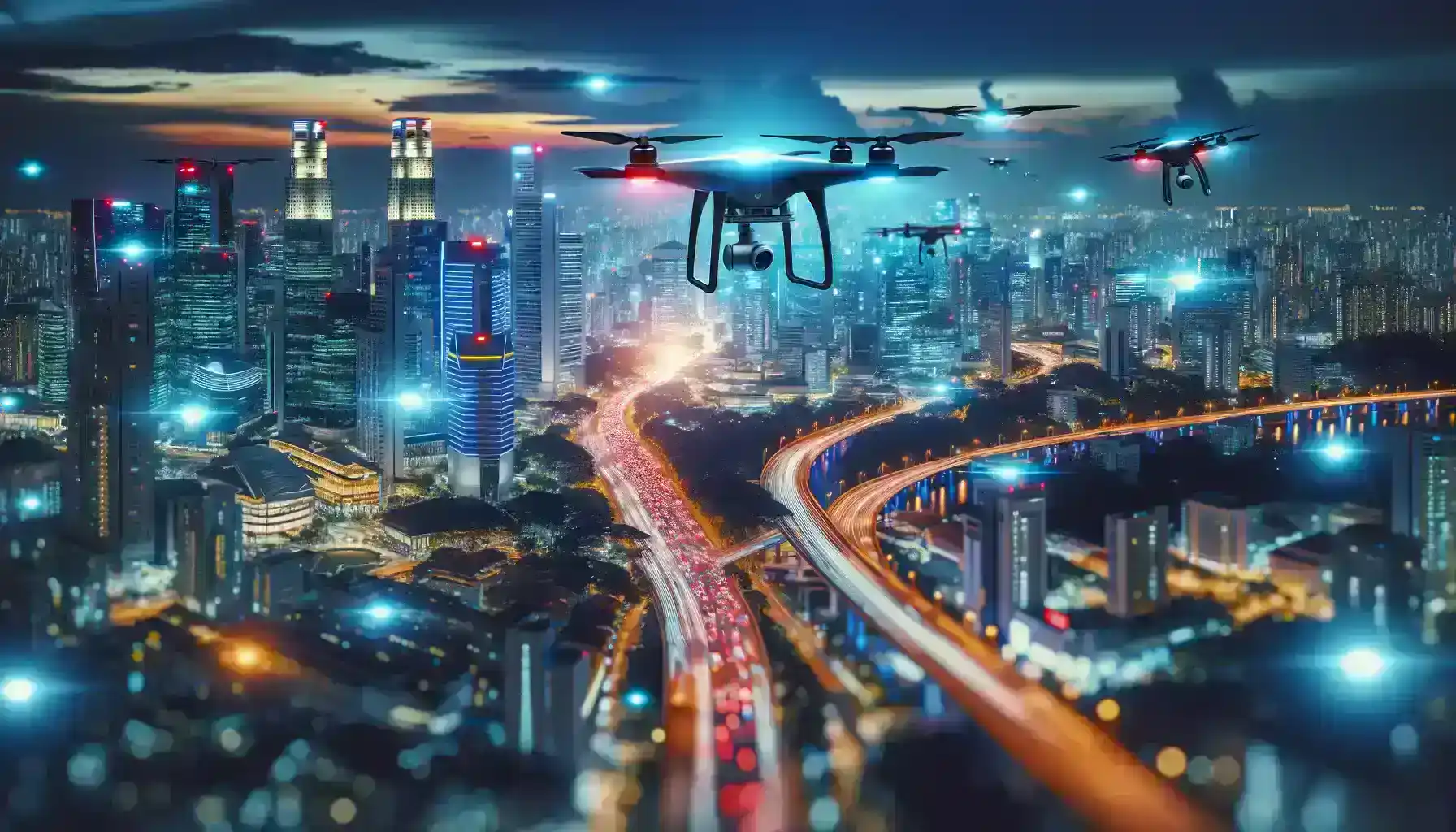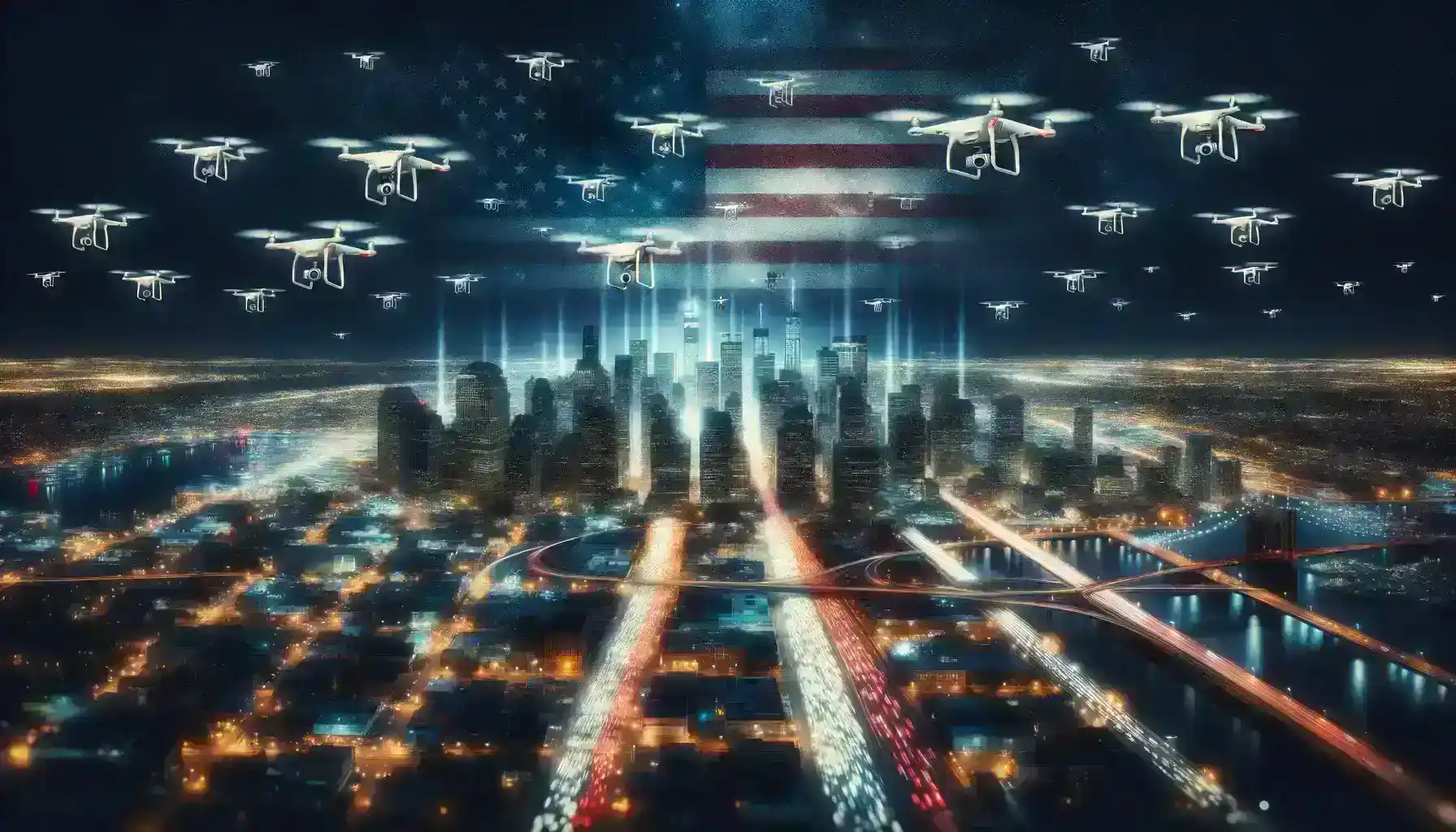Table of Contents
The concept of drone delivery advancements, once a futuristic vision, has rapidly evolved into a tangible reality, revolutionizing the logistics industry. This journey began with rudimentary experiments and has since advanced to sophisticated, automated systems capable of transporting goods with unprecedented efficiency and speed. Initially, drones were primarily used for surveillance and photography, but visionaries quickly recognized their potential in the delivery sector. As technology progressed, these unmanned aerial vehicles (UAVs) became more capable, transitioning from simple, remote-controlled devices to complex, autonomous systems equipped with advanced navigation and communication technologies.

The significance of these advancements cannot be overstated. Drone delivery advancements offer a solution to many of the challenges faced by traditional delivery methods, including traffic congestion, pollution, and the inability to reach remote or inaccessible areas. By leveraging drones, businesses can achieve faster delivery times, reduce operational costs, and minimize their environmental footprint. Moreover, drones play a crucial role in emergencies, delivering essential supplies to disaster-stricken areas where conventional vehicles cannot reach. As drone technology continues to advance, its impact on the delivery sector promises to be transformative, paving the way for a more efficient, sustainable, and accessible future in logistics.
Advancement 1: Enhanced Autonomy and Navigation Systems
Drone delivery advancements focus on Enhanced Autonomy and Navigation Systems. This crucial development involves significant improvements in the drone’s ability to navigate and make decisions independently. With the integration of advanced GPS systems, drones can now pinpoint locations with greater accuracy, crucial for precise deliveries. Moreover, the incorporation of Artificial Intelligence (AI) in decision-making processes allows drones to adapt to dynamic environments, such as avoiding obstacles or recalculating routes in real time.
A notable real-world implementation of these technologies is seen in Amazon’s Prime Air. This project showcases drones equipped with sophisticated sensors and algorithms, enabling them to identify the safest and most efficient route to their destination. The drones operate with a high degree of autonomy, requiring minimal human intervention once their flight path is set.
The impact of these advancements on drone delivery advancements is substantial. Firstly, enhanced navigation systems have significantly reduced delivery times, as drones can now take the most direct routes and adapt quickly to any changes in their environment. Secondly, the improved accuracy ensures that packages are delivered precisely to the intended location, enhancing customer satisfaction. Finally, the operational efficiency of delivery services has seen a marked improvement. With drones capable of autonomous decision-making, there is a decrease in the need for human monitoring, leading to cost savings and a more streamlined delivery process. These advancements collectively signify a leap forward in the capabilities and reliability of drone delivery advancement services.
Advancement 2: Improved Battery Life and Range
One of the most significant drone delivery advancements is the improvement in battery technology, which has dramatically increased both the range and endurance of drones. This evolution involves using more energy-dense batteries and enhancing the energy efficiency of drones through better aerodynamics and lighter materials. These advancements allow drones to cover longer distances on a single charge, expanding their operational scope beyond short-range urban deliveries to include rural and remote areas.
A prime instance of this advancement in action is Zipline’s medical supply delivery in Rwanda. Zipline’s drones, equipped with high-capacity lithium-ion batteries, are capable of flying up to 160 kilometers round trip. This extended range is crucial in delivering essential medical supplies like blood, vaccines, and medications to remote regions, which are often inaccessible by traditional means due to challenging terrain or inadequate infrastructure.
The impact of improved battery life and range in drone delivery is multifaceted. Firstly, it enhances the sustainability of delivery services by reducing the need for ground transportation, which often relies on fossil fuels. Secondly, it democratizes access to essential services and goods, particularly in remote or underserved areas. Longer-range drone operations can bridge the gap in medical, commercial, and emergency services, ensuring timely delivery irrespective of the recipient’s location. In summary, advancements in drone battery technology are not just a technical achievement; they represent a pivotal shift in how goods and services can be delivered, highlighting the transformative potential of drone delivery advancements in connecting and servicing diverse communities.

Advancement 3: Enhanced Payload Capacity- Drone Delivery Advancements
Description of Advancement: A significant drone delivery advancement is the enhancement in payload capacity. Modern drones are now capable of carrying heavier loads due to advancements in materials science, more efficient power management, and smarter design. The use of lightweight composites, combined with more powerful and energy-efficient motors, allows drones to carry larger and heavier packages than ever before. This technological stride is pivotal for broadening the scope of drone delivery services.
UPS’s Flight Forward program illustrates this advancement. This initiative, which received the Federal Aviation Administration’s approval, uses drones capable of carrying substantial payloads. These drones are designed to transport medical supplies, including vital drugs and blood samples, over considerable distances, showcasing the improved payload capabilities.
Impact: The enhanced payload capacity of drones has significantly broadened the range of goods that can be delivered. This advancement is not just about delivering small consumer items; it’s about transporting substantial goods to areas that might be inaccessible or time-consuming to reach by traditional means. This has opened up new markets for drone delivery services, particularly in healthcare, where urgent delivery can make a substantial difference. It also paves the way for drone delivery advancements in other sectors like e-commerce and food delivery, where the ability to carry multiple or larger items is a game changer.
Advancement 4: Integration with IoT and Smart City Infrastructure
Description of Advancement: The integration of drones with IoT and smart city infrastructure represents a significant leap in drone delivery advancements. Drones equipped with IoT capabilities can communicate and interact with smart city networks, allowing for more efficient routing, real-time traffic and weather updates, and autonomous docking and charging stations. This integration enables drones to operate more seamlessly within urban environments, optimizing delivery routes and reducing operational costs.
An example of this advancement is seen in cities like Singapore, where trials are being conducted to integrate drones into their smart city framework. These trials involve drones that communicate with urban sensors and traffic systems, ensuring safe and efficient navigation through densely populated areas.
Impact: The potential impact of integrating drones with IoT and smart city infrastructure is immense. It allows for more precise and efficient delivery routes, reducing delivery times and increasing the reliability of service. This integration is essential for the scalability of drone delivery services in urban areas, where managing airspace safely and efficiently is crucial. By leveraging smart city data, drone delivery advancements services can adapt to changing urban conditions, such as traffic patterns and weather conditions, enhancing the overall efficiency and safety of urban logistics.

Advancement 5: Regulatory Advancements and Airspace Integration
The regulatory landscape surrounding drone delivery advancements is a crucial aspect of its progress. As the drone industry has evolved, so too have the regulations governing its operation. These regulations play a pivotal role in ensuring the safe and efficient integration of drones into national airspace systems.
One notable example of regulatory advancements can be found in the United States, where the Federal Aviation Administration (FAA) introduced the Part 107 regulations. These regulations, officially known as Title 14 of the Code of Federal Regulations (14 CFR) Part 107, established a framework for the commercial operation of small unmanned aircraft systems (UAS), including drones. Part 107 marked a significant shift in the FAA’s approach, allowing for more accessible and streamlined drone operations.
The impact of such regulatory advancements cannot be overstated. Before Part 107, operating drones for commercial purposes was a complex and time-consuming process, often requiring extensive training and certification. Part 107 simplified these requirements, making it easier for businesses to incorporate drones into their operations. This change paved the way for the rapid growth of drone delivery advancement services, as companies could now navigate the regulatory landscape more effectively.
Furthermore, regulatory advancements have been instrumental in enhancing safety. They outline specific rules and restrictions that ensure drones do not pose a threat to other aircraft or people on the ground. Compliance with these regulations is essential for the safe operation of drone delivery services, instilling confidence in both regulators and the public.
In summary, regulatory advancements, exemplified by the FAA’s Part 107 regulations in the USA, have played a pivotal role in shaping the drone delivery advancements landscape. These advancements simplify operations, enhance safety, and contribute significantly to the widespread adoption of drone delivery services. As drone technology continues to advance, it will be essential for regulatory bodies worldwide to adapt and refine their rules to accommodate this transformative industry.
Transforming Logistics: The Future of Drone Delivery
The drone delivery advancements discussed in this article represent a remarkable leap forward in the world of logistics and delivery services. The integration of enhanced autonomy and navigation systems has paved the way for faster and more accurate deliveries, while improved battery life and range have expanded the horizons of what can be achieved. Furthermore, the increased payload capacity and integration with IoT and smart city infrastructure have made drone deliveries more versatile and capable of serving diverse markets.
Perhaps equally pivotal is the evolving regulatory landscape that is making airspace integration a reality, ensuring the safe and widespread adoption of drone delivery. Collectively, these advancements are poised to revolutionize the delivery industry, offering unprecedented speed, efficiency, and access to both urban and remote areas.
Looking to the future, the prospects for drone delivery advancements are exceptionally promising. We can anticipate even greater advancements in AI and machine learning, further reducing the need for human intervention. Additionally, eco-friendly drone technologies and sustainable practices will likely become more prevalent, aligning with environmental concerns. As drone delivery continues to mature, it may become an integral part of everyday life, offering a glimpse into a future where the sky is not the limit but the next frontier for efficient and convenient deliveries.